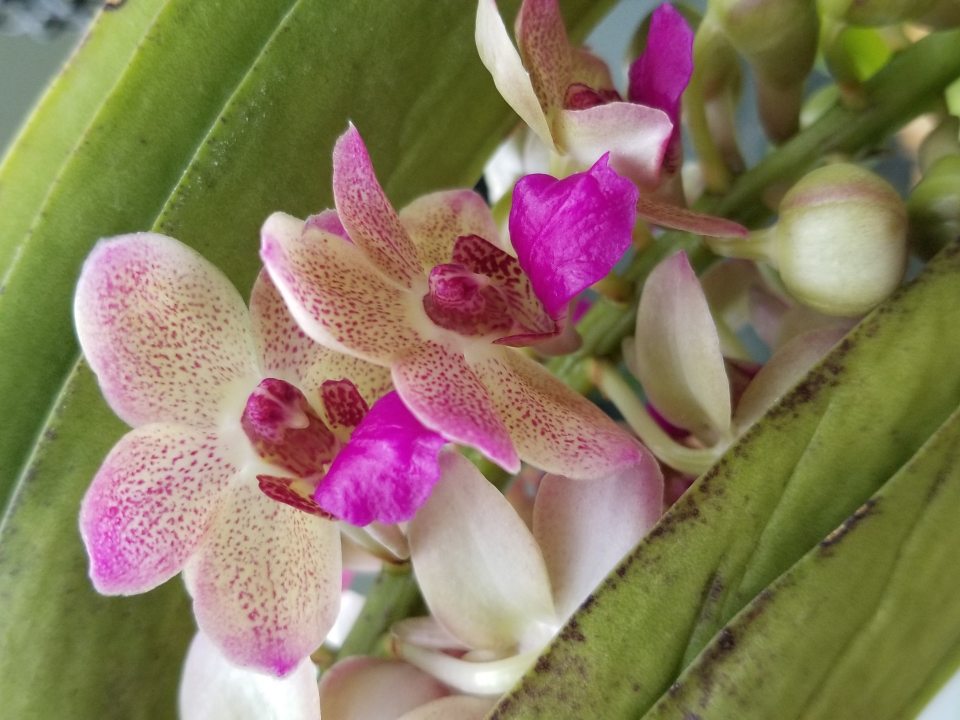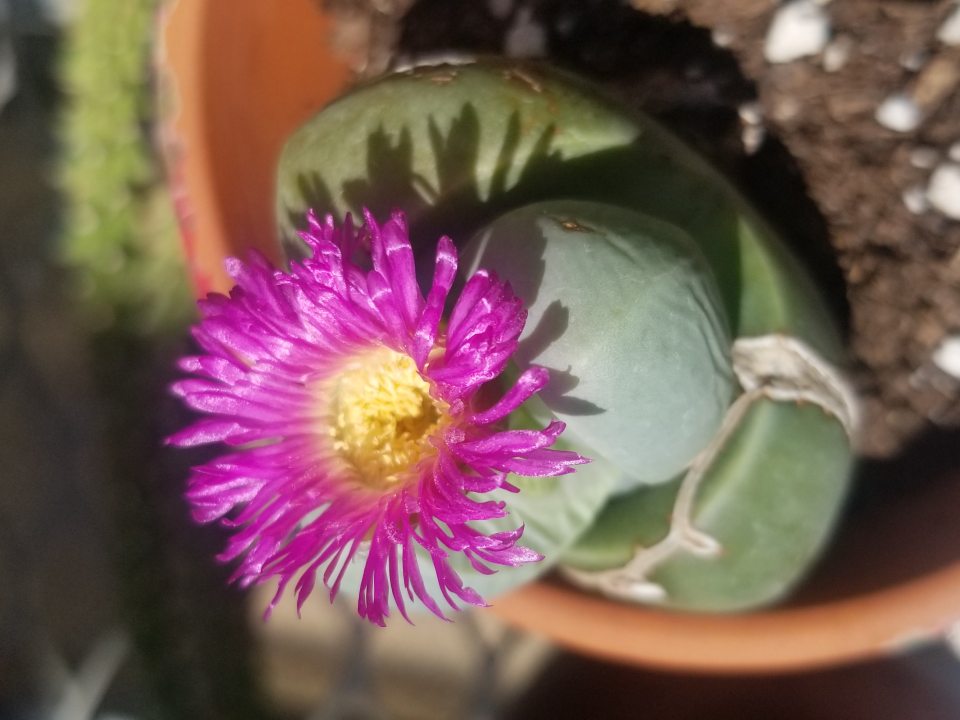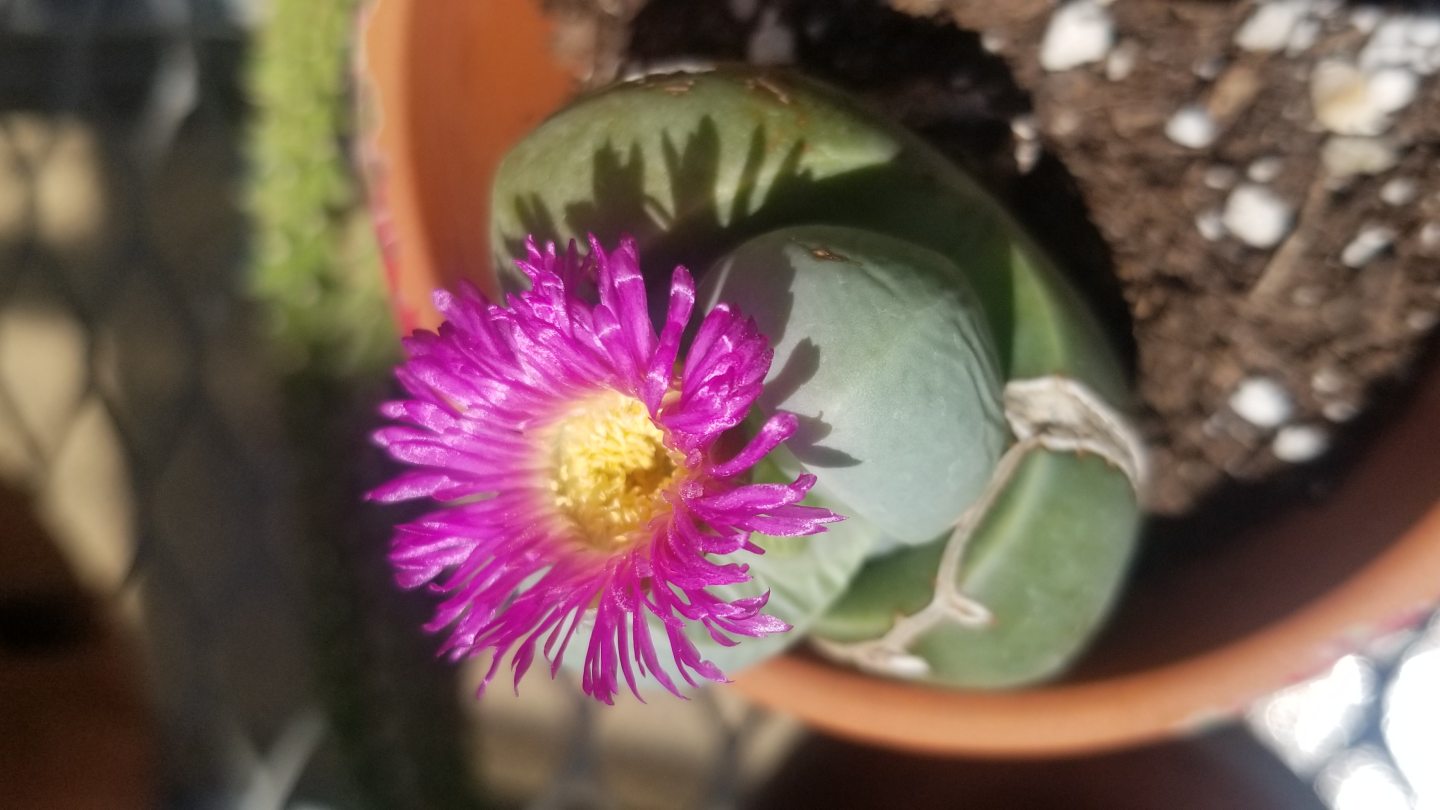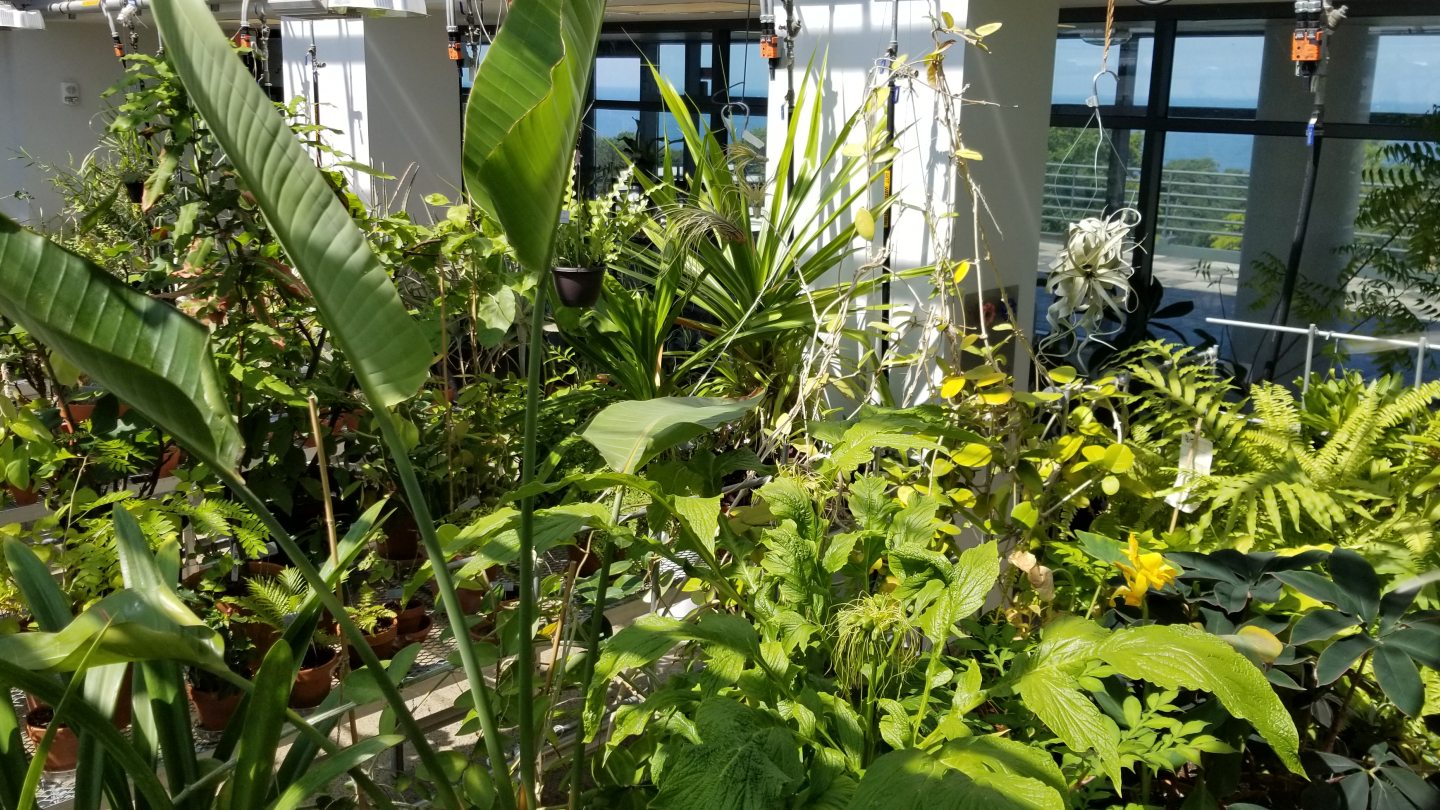The Department of Biological Sciences greenhouse supports teaching, research, and outreach.
Mission
Our 1,250 square foot greenhouse contains a vibrant plant collection that supports teaching, research, and public outreach. We offer space and opportunities for student research and training, fostering a hands-on learning environment. By collaborating with the campus community, we promote interdisciplinary projects that highlight plant diversity, conservation, and ecological issues. Our goal is to encourage botanical education and a deeper appreciation of the plant kingdom, while providing a reflective space on campus dedicated to the wonders of the natural world.
Location
The greenhouse is located on the fourth floor of the Shineman Center, on the north side of the building with a lovely view of Lake Ontario. It is accessible via the northwest stairwell of the Shineman Center or by taking the north elevator. From the first floor, take the elevator located across from Room 174 and ride up to the roof (R).






